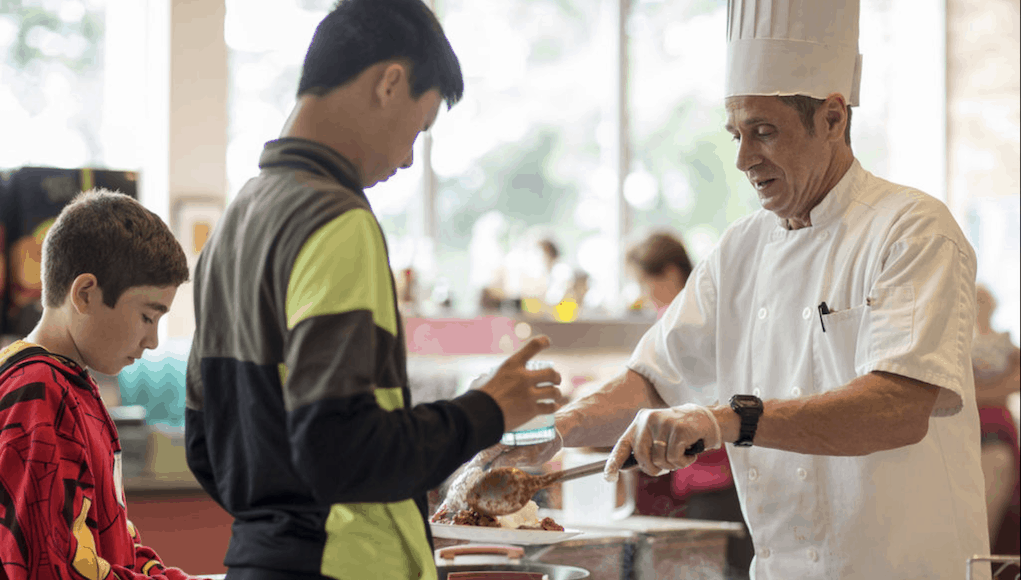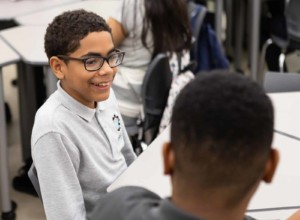Why Schools Should Promote Applied Learning

By: Mark Siegel
Surely every teacher in a traditional school has heard that frustrating question, “But when are we actually going to use this in real life?”
The most frustrating part is that all too often, the real answer is… “You’re not!”
For decades, we’ve been furiously determined to teach kids all kinds of things they don’t need to know. This has sometimes led to national debates, but more often, just to students with vastly unrealized potential.
Applied learning has the solution to that. You might also hear or see the same approach being referred to as project-based learning, problem-based learning, or even more names, but the foundation of each is the same: avoid boring lectures and pointless tests, and focus on real-world application that will actually benefit students’ lives.
What Is Applied Learning, Anyway?
The simple answer is that applied learning is learning by doing, where students are actively engaged with solving a problem. It’s learning that’s done in the real world, and thus relevant there. Applied learning has much in common with “place-based learning”—which adds context and relevance to more traditional education models—but in a way that reduces the emphasis on the where and puts it on the what and the why.
For example, in a place-based lesson plan, the locations themselves are typically of high importance. In an applied learning model, the same can be true, but it’s also common for lessons to take place in locations that aren’t particularly noteworthy—aside from their ability to support the material at hand.
When learning is experiential—that is when students are learning by doing—the answer to that age-old question, “When are we going to use this in real life?” is self-evident.
For example, in Mr. Wood’s seventh-grade science class in Maine, students discover the intrigue of ecology as they dig into the reasons for the declining clam population on the local coast. After exploring the beach in search of clams, they take their findings to the classroom and onward, each discovery fueling the next.
At the Arthur Morgan School in North Carolina, middle school students are responsible for the maintenance of the school grounds. Mending fences, caring for livestock, and maintaining vehicles are all real-life, personally-relevant skills, the benefits of which do not culminate in the passing of a test.
Applied Learning Establishes and Depends on Community Connection.
Part of what makes learning real and relevant is when it reaches beyond the four walls of the classroom. As students see that the topic at hand affects their community, and as the students themselves are affected by members of that same community, learning acquires a depth inhibited by the limitations of textbooks and study guides.
The seventh-grade students in Maine met numerous field experts of whom they could ask questions and receive passionate, expert-level answers regarding a problem in their own community. This connection both gave weight to the otherwise-far-removed subject of ecology and taught the students the value of communication.
The Milwaukee Public School System in Wisconsin is growing its own in-house apprenticeship program, matching high school juniors and seniors with local businesses. The students attend school in the morning and work in the afternoon. Not only do they get paid, but they also develop hands-on skills and experience that will be invaluable as they leave high school. Such partnerships benefit employers, too, enabling them to find and develop local talent.
Applied Learning Is Flexible and Open-Ended, With Real Results.
Thousands of elementary and middle school students across the nation still diligently fill a tri-fold foam board with cut-out letters, printed photos, and detailed graphs of their chosen science experiment, proudly displaying them at the school science fair. Someone gets a blue ribbon and a few go on to a bigger competition.
For most students, once the science fair is over, so is the science. And the posters eventually go on to the landfill, joining their social studies diorama cousins.
Unlike a choreographed textbook experiment, however, Mr. Wood’s students’ efforts to help increase the clam population was neither pre-determined nor rigid in requirements. And unlike many traditional school projects, their results were not disposable. They laid a foundation upon which future researchers could build; they gained a level of understanding that superseded anything they would have retained from a few chapters of text; and they instilled within themselves a previously-unrecognized interest in science.
Wouldn’t It Be Easier to Just Read the Book?
Yes, of course.
And if the goal is for students to memorize facts long enough to pass a test, that might be good enough.
But if the goal is to inspire students to learn—and to love learning—we must enable them to have real-life experiences that connect them with the wider community and empower them to find real solutions to relevant problems.
In the case study that outlined the success of Mr. Wood’s science class, students were interviewed about their experiences in an applied-learning environment. Not only were they excited about biology as it relates to the clams, but they also believed that they would be interested in any science taught with the same methods.
In a recent study conducted at the University of North Carolina Wilmington, students of Experience Transformative Education through Applied Learning (ETEAL), an incubator program that encourages innovative student experiences, reported higher levels of critical thinking and engagement both in the learning and community environments than did their counterparts in traditional classes.
In Singapore, home of one of the best educational systems in the world applied learning has become the norm. By 2023, all primary schools are to have an Applied Learning Program, and students are encouraged to not just memorize who and what and when, but to ask how and why.
In the words of American philosopher and educator John Dewey, all learning comes about through experience.
Not sitting at a desk. Not repeating memorized times and dates. Not generating a thesis paper on a subject so far removed from a student’s life that they can barely get through the material to write it.
If learning comes about through experience, then we need to build learning environments that allow students to have exciting, uplifting, and challenging experiences. They will light up, and then go light up the world.
For more, see:
- ConnectEd Links Learning to Career Pathways
- Podcast: Ron Berger on Helping Students Become Leaders of their Own Learning
- Learning to Make a Difference at One Stone
Stay in-the-know with innovations in learning by signing up for the weekly Smart Update.
Mark Siegel has been an educator for over 40 years; in addition to serving as headmaster of a private school in Oregon, he travels the country attending and speaking at education conferences.





0 Comments
Leave a Comment
Your email address will not be published. All fields are required.